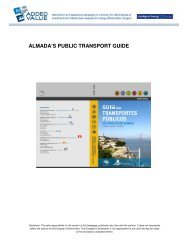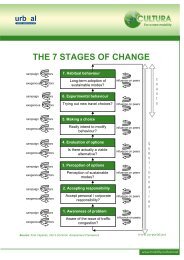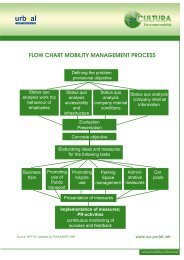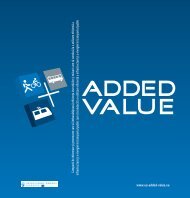SUMO - Eltis
SUMO - Eltis
SUMO - Eltis
Create successful ePaper yourself
Turn your PDF publications into a flip-book with our unique Google optimized e-Paper software.
6. Formulating targets using the<br />
<strong>SUMO</strong> analysis levels<br />
6.1 SETTING TARGETS AT THE DIFFERENT LEVELS<br />
Evaluation in accordance with <strong>SUMO</strong> analysis levels permits project monitoring both<br />
during and after the project and offers an opportunity to compare projects with each<br />
other.<br />
Based on the overall goals for the project, detailed targets are defined for the different<br />
analysis levels. These targets should be realistic, measurable and time-limited.<br />
Sometimes it can be easier to formulate targets for the different analysis levels in reverse,<br />
based on the system effect goals for the project. As previously stated, it is not always<br />
applicable or desirable to use all levels for monitoring and evaluation of a project.<br />
The table that is drawn up at the outset of the project with formulated targets for the<br />
different analysis levels can later be used as a template for monitoring. By adding the<br />
most important results to this during the project a clear summary of how far the project<br />
has progressed and of the results achieved is obtained.<br />
Figure 6.1 shows examples of targets for the different analysis levels in the Test Traveller<br />
project. We have consciously chosen to formulate targets for each level. However, it is<br />
more common to choose one or a couple of levels where it seems most relevant to have<br />
targets. At the project planning stage, it is important to have thought through all levels<br />
to find the most interesting levels for each individual project. Further examples are presented<br />
in the Appendix.<br />
sumo – System for Evaluation of Mobility Projects<br />
FORMULATING TARGETS<br />
23








